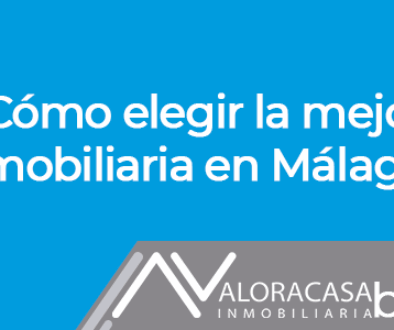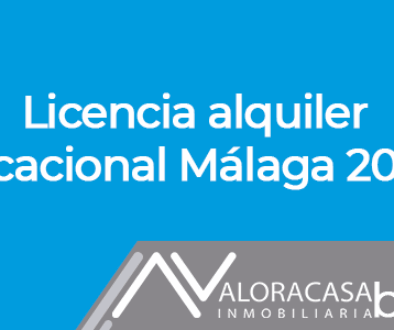IEE (building evaluation report)
IEE (Building Evaluation Report) in Malaga: What is it, when it is needed and how it is processed
The Building Evaluation Report, better known as IEE, it is a mandatory technical document that evaluates the state of preservation of real estate, their accessibility and their energy efficiency. It is a step beyond the traditional Technical Inspection of Buildings (ITE), incorporating new demands derived from state and regional regulations regarding sustainability and accessibility.
In cities like Málaga, where an important part of the building park is over 50 years old, IEE has become a fundamental tool not only to comply with the law, but also to access public aid and guarantee adequate habitability conditions.
This article explains clearly and detailed what IEE is, who is obliged to present it, what it contains, how it is processed in Malaga and what advantages it offers.
What is the IEE?
The Building Evaluation Report (IEE) It is a technical document that analyzes three key aspects of a property:
-
Building statement
-
Basic universal accessibility conditions
-
Energy efficiency level
That is, combine in a single report the old ITE, together with a Energy audit and an analysis of degree of accessibility, according to the criteria marked by the Technical Building Code (CTE) and the specific regulations.
Its objective is to detect possible deficiencies, prevent situations of deterioration and guide improvement actions, both structural and energy or accessibility.
When is IEE mandatory?
According to him Real Decree 233/2013 And the Andalusian autonomous legislation are obliged to dispose of IEE:
-
Residential buildings with more than 50 years old.
-
Buildings that want to access public aid for energy rehabilitation or accessibility.
-
Those who expressly determine the urban authorities, even with less than 50 years.
The Autonomous Community or the City Council can establish more strict requirements or expand the deadlines.
In the case of Málaga, IEE is mainly required to multifamily housing buildings that exceed half a century of antiquity, although it is also recommended in cases of comprehensive reform or request for subsidies.
What real estate affects the IEE?
IEE must present the following types of properties:
-
Collective housing buildings with more than 50 years.
-
Multifamily residential blocks.
-
Building sets in horizontal property regime.
-
Protected properties or located in urban conservation areas.
Its demand is also common in buildings that wish to opt for financing programs or energy rehabilitation aid such as European funds Next Generation EU.
What is the difference between ITE and IEE?
Although both are mandatory technical reports, the IEE Includes all the content of the ITE And expand it:
| Aspect evaluated | ITE | IEE ✅ |
|---|---|---|
| Conservation status | ✔️ | ✔️ |
| Energy efficiency | ❌ | ✔️ |
| Accessibility | ❌ | ✔️ |
| Requirements for aid | ❌ | ✔️ |
In summary, the IEE is more complete and is the only valid to access Public Rehabilitation Aid.
Who should do the IEE?
The IEE must be written by competent technicians, with qualifying degree and collection:
-
Architects
-
Technical architects
-
Building Engineers
These professionals must make visits to the property, detailed technical inspection, energy calculations and an analysis of the applicable regulations. The report must be visited by the corresponding school.
What does the building evaluation report contain?
A complete IEE includes three fundamental blocks:
1. Conservation status
-
Facades, covers, foundation, structure
-
Redes generales de fontanería, saneamiento, electricidad
-
Elementos comunes: escaleras, portales, patios
2. Accesibilidad universal
-
Presencia o ausencia de barreras arquitectónicas
-
Viabilidad de instalar ascensores, rampas u otros sistemas
-
Cumplimiento de las exigencias mínimas de accesibilidad (según el DB SUA del CTE)
3. Eficiencia energética
-
Calificación energética del edificio (de la A a la G)
-
Medidas recomendadas para mejorar el rendimiento
-
Certificado energético con informe técnico
How is IEE processed in Malaga?
En el municipio de Málaga, el procedimiento habitual para presentar el IEE es el siguiente:
-
Contratación del técnico competente.
-
Inspección del edificio y recopilación de documentación técnica.
-
Elaboración del informe IEE conforme al modelo oficial.
-
Registro telemático a través del portal de la Junta of Andalusia y/o del Malaga's town hall, según el destino del documento (subvenciones, registro catastral, archivo urbanístico…).
En algunos casos, especialmente si se solicitan ayudas a la rehabilitación, es obligatorio registrar el IEE en el Registro Andaluz de Certificados e Informes de Evaluación de Edificios (RAIEE).
How often should IEE be renewed?
Una vez emitido el IEE, su vigencia es de 10 años desde su fecha de emisión, salvo que se indique lo contrario por parte de la administración o que el edificio haya sufrido daños graves o rehabilitaciones estructurales importantes.
What happens if IEE is unfavorable?
Si el informe detecta deficiencias graves, el técnico deberá establecer medidas correctoras and a plazo para su ejecución. En este caso:
-
El Ayuntamiento puede requerir obras obligatorias de subsanación.
-
Se deben acreditar las intervenciones realizadas y emitir un nuevo informe actualizado.
-
En el caso de inmuebles con ayudas solicitadas, puede bloquearse la tramitación hasta que se resuelva el estado del edificio.
Advantages of having an IEE in order
Contar con el IEE actualizado no solo es obligatorio en muchos casos, sino también una oportunidad para:
-
Mejorar el valor del edificio.
-
Obtener ayudas públicas y subvenciones para rehabilitación.
-
Reducir el consumo energético y aumentar la eficiencia.
-
Planificar reformas con antelación, evitando situaciones de emergencia.
-
Garantizar la habitabilidad, accesibilidad y seguridad estructural.
-
Cumplir con las normativas autonómicas y municipales, evitando sanciones.
What aid are available with the IEE?
Uno de los grandes beneficios del IEE es que permite acceder a diversas subvenciones públicas:
-
Ayudas para la rehabilitación energética de edificios (Plan Ecovivienda Andalucía)
-
Subvenciones para accesibilidad (instalación de ascensores, rampas, salvaescaleras)
-
Fondos europeos Next Generation EU
En todos estos programas, disponer del IEE es requisito indispensable, y en muchos casos se incluye la redacción del propio informe dentro de los gastos subvencionables.
What is the cost of making an IEE?
El coste de un IEE puede variar según el tipo, tamaño y estado del edificio, pero como orientación:
-
Edificios pequeños o unifamiliares: desde 350 € a 600 €
-
Bloques de viviendas medianos: in between 600 € y 1.200 €
-
Grandes comunidades: puede superar los 1.500 €
A ello hay que sumar posibles tasas administrativas si se presenta ante el Ayuntamiento o en registros oficiales.
Where is IEE in Malaga?
La tramitación y registro puede hacerse a través de:
-
Electronic Headquarters of the City of Malaga: https://sede.malaga.eu
-
Portal de la Junta de Andalucía – Consejería de Fomento, Articulación del Territorio y Vivienda: https://juntadeandalucia.es
Conclusion
The Building Evaluation Report (IEE) es una herramienta imprescindible para garantizar que los inmuebles, especialmente los de más de 50 años, cumplen con los requisitos actuales de conservación, accesibilidad y eficiencia energética.
In Málaga, su aplicación cobra especial relevancia en el contexto de rehabilitación urbana, acceso a subvenciones y prevención de deterioro estructural. Tener el IEE actualizado no solo es una obligación legal, sino también una forma eficaz de proteger el valor del inmueble y planificar intervenciones que alarguen su vida útil.




